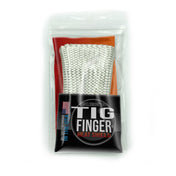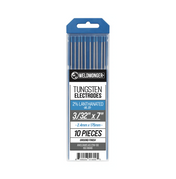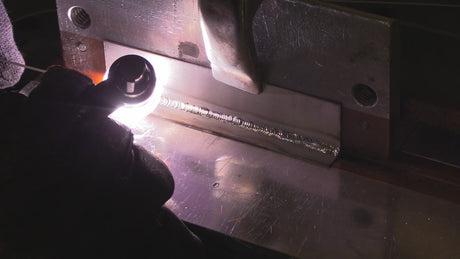Pulse TIG Settings for Stainless Steel
Here are my thoughts on pulse tig settings for stainless
- I like to use pulse rates of .7 to 2 pulses per second or higher than 33pps, and pulse rates of 3-30 are jut hard on my eyeballs and annoying to watch.
- A pulse setting of around 1-2pps , with low background current and low pulse width, when used in conjunction with chill bars can be very helpful on outside corner joints in limiting distortion.
- High speed pulse rates of 33pps or more can be very helpful when welding on or near an edge.
- Automated tig welding benefits more from pulse than with manual tig welding due to human adjustments
- The rule of 33 is where you set all pulse settings to 33. 33 pps is not difficult to watch and can help to agitate the puddle and move it along at lower overall amperage. The rule of 33 for pulse settings also helps for filling gaps
My first experience with pulse was when I bought my first Miller dynasty 200dx.
Up until then, I had a Syncrowave 250 that did not have pulse settings.
For short time, I used both a Syncrowave 250 and my dynasty 200 for my side hustle welding business.
One of the shops I did work for gave me a job where I needed to weld a bunch of stainless beverage containers that were only about .020” thick.
The job was to shorten a beverage dispenser by around 6 inches to make it light enough for petite women to carry and serve beverages at concerts, sports events, etc.
( if you are curious, you can search google for rocket man beverage backpack to see what I am talking about)
The beverage containers were 304L stainless and thickness was around .020” and the weld was a simple full penetration butt joint....so the fit up was critical.
I had to make sure all tack welds were fully purged with zero mismatch and no gap…
Being a food service container, the inside weld needed to be smooth, shiny, and free from any crevices.
Both the syncrowave and the dynasty had low enough start amps to make very small tack welds using a 1/16” 2% tungsgten electrode.
Once the tack welds were made, most of the welding was done without filler metal but I kept a piece of .030” er316L filler in my hand just in case.
I think it is good practice to have a piece of filler rod in your hand for certain autogenous welds just in case a hole opens up.
I welded half of the beverage containers using the Syncrowave 250 and without pulse... and I also welded some with the Dynasty200dx using pulse settings of around 2pps, 20% background, and 30% pulse width.
All of the beverage containers came out fine but what I noticed was that using pulse settings made the job go just a little bit easier.
Not necessarily better, …just a bit easier. and any slight mismatch or gaps were more forgiving
It seemed like I had to concentrate more on the puddle without using pulse....whereas with pulse settings, the puddle seemed to stay consistent without constant adjustments with the foot pedal.
I think that when you use pulse for manual applications, you tend to make fine adjustments in travel speed without even realizing it.
Turntable welding and automated applications are a different story.
Pulse settings can help a lot for these applications.








